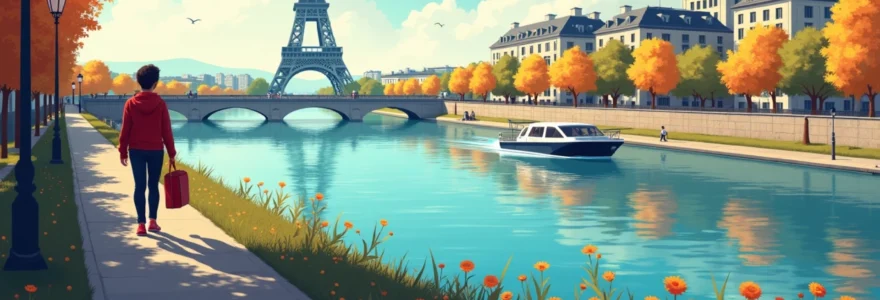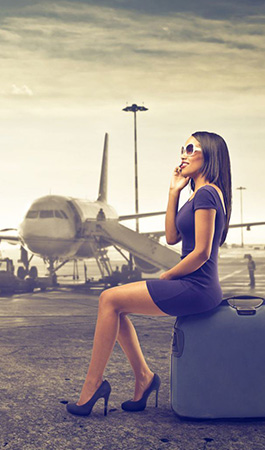France, a country steeped in history, culture, and culinary excellence, beckons millions of visitors each year. From the romantic streets of Paris to the sun-drenched beaches of the French Riviera, this diverse nation offers a wealth of experiences. However, to truly appreciate and navigate the intricacies of French life, it’s essential to arm yourself with key information before embarking on your journey. Understanding the nuances of French transportation, cuisine, accommodation options, and cultural expectations can transform your trip from merely enjoyable to truly unforgettable.
Essential travel documentation for france
Preparing for your French adventure begins long before you set foot on Gallic soil. Ensuring you have the correct travel documentation is paramount. For most visitors, a valid passport is the primary requirement. However, depending on your nationality and the duration of your stay, additional documents may be necessary.
EU citizens can enter France with just a valid national identity card or passport. Non-EU visitors, including those from the United States, Canada, and Australia, typically need a passport valid for at least three months beyond their planned departure date. For stays longer than 90 days, a visa is required.
It’s crucial to check the specific requirements for your nationality with the French embassy or consulate in your home country. Always carry copies of important documents , including your passport, travel insurance policy, and any necessary visas. Store digital copies securely online for easy access in case of emergencies.
Remember, entry requirements can change, so verify the latest information close to your travel date.
Navigating french transportation systems
France boasts an extensive and efficient transportation network that makes exploring the country a breeze. From high-speed trains to local buses and bike-sharing schemes, understanding your options can save you time and money.
SNCF train network: TGV, intercités, and TER services
The French national railway company, SNCF, operates an extensive network of trains that connect major cities and rural areas. The crown jewel of this network is the TGV ( Train à Grande Vitesse ), France’s high-speed train service. TGV trains can reach speeds of up to 320 km/h, making them an efficient way to cover long distances.
For regional travel, Intercités trains offer comfortable journeys between medium-sized cities, while TER (Transport Express Régional) services connect smaller towns and villages. Booking tickets in advance often results in significant savings, especially for TGV journeys.
Paris metro and RER: zones, tickets, and navigo passes
Navigating Paris’s public transport system can seem daunting at first, but it’s one of the most efficient ways to explore the city. The Metro, with its 16 lines and over 300 stations, covers most of central Paris. The RER (Réseau Express Régional) is a commuter rail network that extends into the suburbs and provides faster connections across the city.
Paris divides its public transport into zones, with most tourist attractions falling within zones 1-3. Single tickets ( t+ tickets) are valid for one journey, including transfers between the Metro and RER within Paris. For frequent travel, consider purchasing a Navigo pass, which offers unlimited travel within chosen zones.
Air france domestic routes and regional airports
While trains are often the preferred mode of transport for domestic travel, flying can be a time-saving option for longer distances. Air France, the national carrier, operates an extensive network of domestic routes, connecting Paris to major cities and regional hubs across the country.
France has numerous regional airports, many of which are served by both national and low-cost carriers. When planning your itinerary, consider the time and cost trade-offs between flying and taking the train, especially for journeys to more remote areas or islands like Corsica.
Autoroutes and toll systems for driving in france
For those preferring the freedom of the open road, France’s extensive network of autoroutes (motorways) provides excellent connections between major cities and regions. However, it’s important to note that most autoroutes are toll roads, known as péages .
Toll costs can add up quickly, so factor this into your budget when planning a road trip. Many autoroutes now offer automated toll payment systems, such as the Télépéage, which can save time at toll booths. Remember that driving in France is on the right-hand side of the road, and always carry your driving licence, vehicle registration documents, and proof of insurance.
French cuisine and dining etiquette
French gastronomy is renowned worldwide, and experiencing the country’s culinary delights is often a highlight for many visitors. Understanding French dining customs and etiquette can enhance your culinary journey and help you navigate restaurants with confidence.
Michelin-starred restaurants vs. bistros and brasseries
France is home to some of the world’s most acclaimed restaurants, many of which boast coveted Michelin stars. These establishments offer exquisite dining experiences, often featuring innovative cuisine and impeccable service. However, they can be expensive and require reservations well in advance.
For a more casual yet authentic French dining experience, consider visiting bistros and brasseries. Bistros typically offer a cozy atmosphere and hearty, traditional dishes, while brasseries are larger establishments serving classic French fare throughout the day.
Dining out in France is about more than just the food; it’s a social experience to be savored and enjoyed.
Regional specialties: from bouillabaisse to cassoulet
France’s diverse regions each boast their own culinary specialties, reflecting local ingredients and traditions. In Provence, try the hearty fish stew bouillabaisse , while in the southwest, indulge in cassoulet , a rich bean and meat casserole. The Burgundy region is famous for its beef bourguignon, and Alsace for its choucroute garnie , a sauerkraut dish.
When dining out, look for restaurants offering a plat du jour (dish of the day) or a menu fixe (set menu), which often provide excellent value and a chance to sample local specialties.
Wine regions and appellations d’origine contrôlée (AOC)
French wine is integral to the country’s culinary culture, with each region producing distinctive varieties. The AOC (Appellation d’Origine Contrôlée) system guarantees the origin and quality of wines, as well as other products like cheese and butter.
Major wine regions include Bordeaux, known for its full-bodied reds; Burgundy, celebrated for both red and white wines; Champagne, the exclusive producer of the world’s most famous sparkling wine; and the Loire Valley, offering a diverse range of styles.
Tipping practices and service compris
Understanding tipping etiquette in France can prevent awkward moments at the end of a meal. Unlike in some countries, service charges are typically included in your bill, indicated by service compris . This means tipping is not obligatory, but it is customary to leave small change or round up the bill for good service.
In high-end restaurants or for exceptional service, you may choose to leave a more substantial tip, typically 5-10% of the bill. For café services, leaving small change is common practice.
Cultural landmarks and UNESCO world heritage sites
France boasts an impressive 49 UNESCO World Heritage Sites, showcasing its rich history and cultural significance. These sites range from prehistoric cave paintings to Renaissance châteaux and modernist architectural marvels.
The Eiffel Tower, perhaps France’s most iconic landmark, draws millions of visitors annually. However, exploring lesser-known sites can offer equally rewarding experiences. The prehistoric Lascaux caves in the Dordogne, the Roman aqueduct Pont du Gard near Nîmes, and the majestic Mont Saint-Michel in Normandy are just a few examples of France’s diverse cultural heritage.
When planning your itinerary, consider balancing popular attractions with off-the-beaten-path gems. Many sites offer guided tours, which can provide valuable insights into their historical and cultural significance. Book tickets in advance for popular attractions to avoid long queues , especially during peak tourist seasons.
Accommodation options: from châteaux to gîtes
France offers a wide array of accommodation options to suit every taste and budget. From luxurious hotels in historic buildings to charming countryside cottages, your choice of lodging can greatly enhance your French experience.
Parisian arrondissements and hotel classifications
Paris is divided into 20 administrative districts called arrondissements , each with its own character and attractions. The 1st to 8th arrondissements, located in the city center, are popular among tourists for their proximity to major sights. However, staying in outer arrondissements can offer a more authentic Parisian experience and often at lower prices.
French hotels are classified using a star system, ranging from 1 to 5 stars. This classification is based on a set of criteria including room size, facilities, and services offered. It’s worth noting that even lower-starred hotels in France often maintain high standards of cleanliness and service.
Chambres d’hôtes and B&B experiences
Chambres d’hôtes , the French equivalent of bed and breakfasts, offer a more personal and intimate accommodation experience. Often located in private homes or small estates, they provide an excellent opportunity to interact with local hosts and gain insights into French life.
These establishments typically offer a handful of rooms and include breakfast in the rate. Many also offer table d'hôte dinners, where guests can enjoy home-cooked meals featuring local specialties.
Camping and caravanning in france’s national parks
For nature enthusiasts and budget-conscious travelers, camping is a popular option in France. The country boasts numerous well-equipped campsites, many located in or near stunning natural settings such as national parks and coastal areas.
France’s national parks offer diverse landscapes, from the Alpine peaks of Vanoise to the rugged coastline of Calanques. Many parks have designated camping areas with facilities ranging from basic to luxurious. Always check local regulations and obtain any necessary permits before setting up camp .
Language essentials and communication tips
While it’s possible to navigate France without speaking French, making an effort to use the local language can greatly enhance your experience and interactions with locals. Learning a few key phrases can go a long way in showing respect for French culture and often results in warmer receptions.
Essential phrases to master include:
- “Bonjour” (Hello) – Use this greeting everywhere, from shops to restaurants
- “S’il vous plaît” (Please)
- “Merci” (Thank you)
- “Parlez-vous anglais?” (Do you speak English?)
- “Je ne comprends pas” (I don’t understand)
In formal situations or when addressing someone older or in a position of authority, use “vous” instead of “tu” for “you”. This shows respect and is an important aspect of French etiquette.
When dining out or shopping, knowing numbers and basic food vocabulary can be incredibly helpful. Don’t be afraid to use a phrasebook or translation app if needed, but always begin interactions in French, even if it’s just to ask if the person speaks English.
Remember that communication is about more than just words. French culture places great importance on politeness and formality in interactions. Always greet shopkeepers when entering a store, and say goodbye when leaving. Maintain eye contact during conversations, and avoid speaking loudly in public spaces.
By embracing these cultural nuances and making an effort with the language, you’ll find your French adventure not only more manageable but also infinitely more rewarding. From navigating the intricate transportation systems to savoring regional delicacies and exploring UNESCO World Heritage sites, your journey through France promises to be an unforgettable tapestry of experiences.


